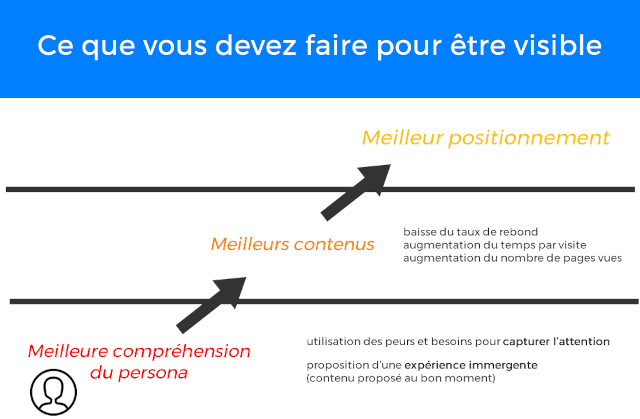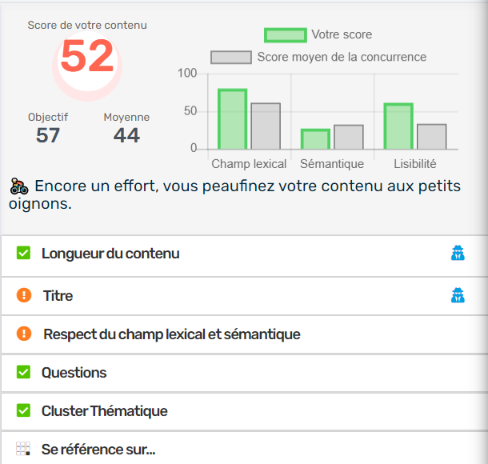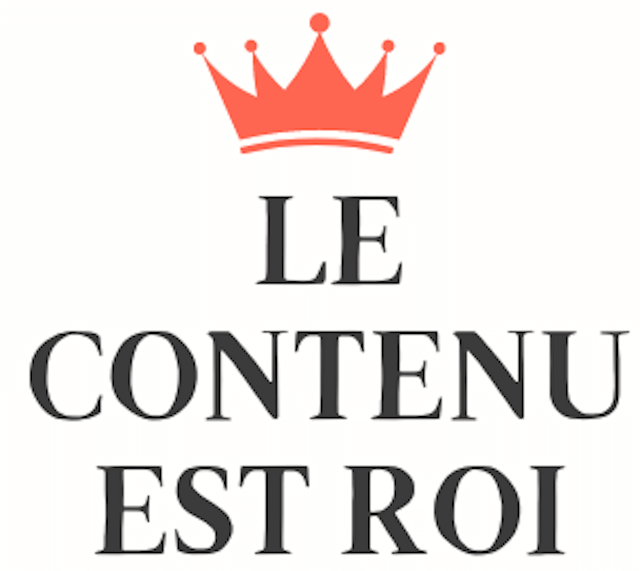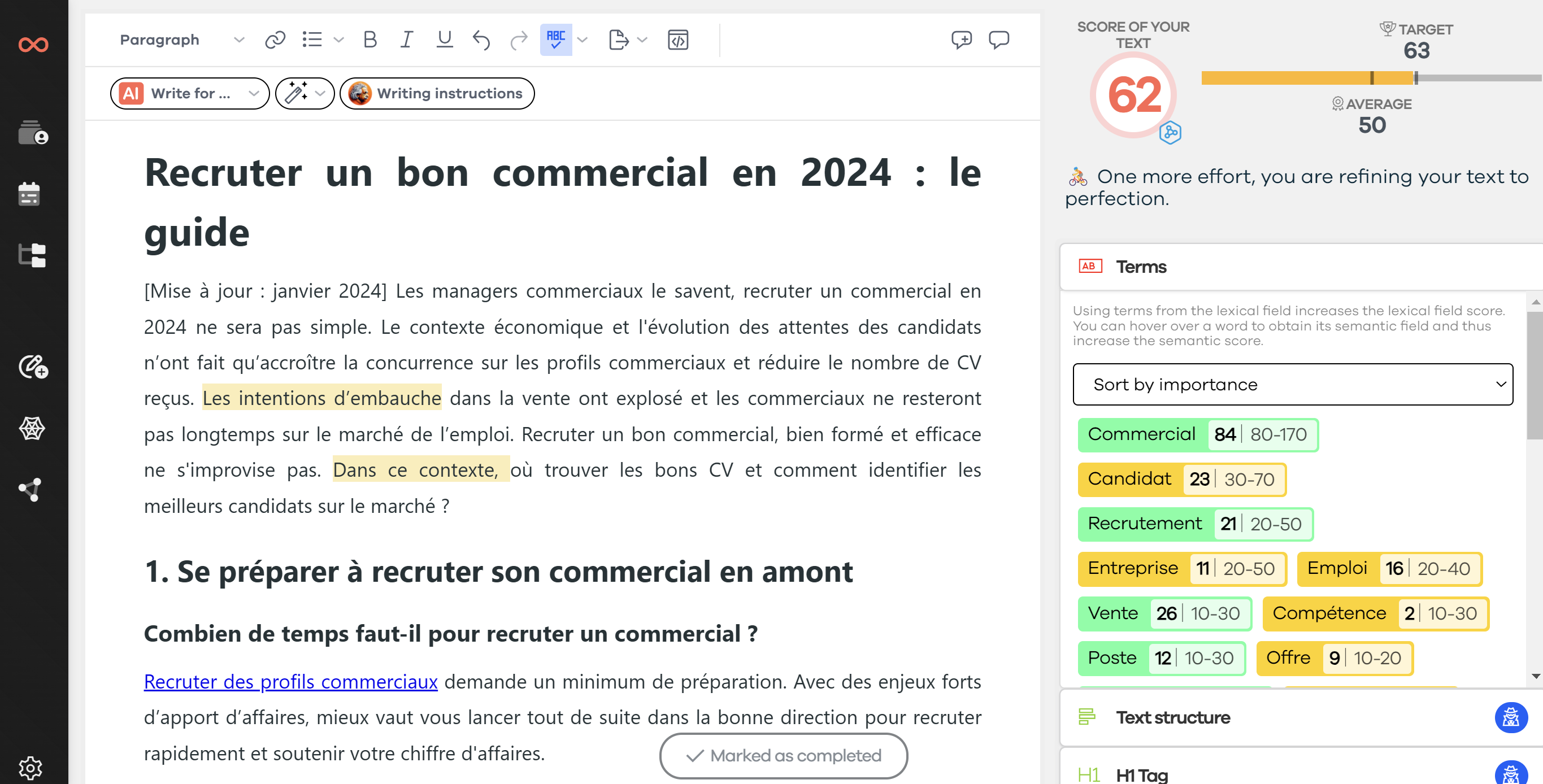Do you want to improve your conversion rate online? Do you also want to increase your visibility and boost your website traffic? Then what you need is a solid editorial strategy! After a brief definition, I'll share with you the 6 steps you shouldn't overlook to achieve this. Finally, I'll honestly discuss the pros and cons of this essential process for succeeding in your digital communication.
👨🏫 Definition: What is an editorial strategy?
An editorial strategy, also known as a content strategy, is the most important element of your content marketing. It allows you to define your actions precisely in the short, medium, and long term. As a result, you always know why you're publishing and maintain a consistent communication style.
Moreover, this strategic element of your digital communication helps address a fundamental concept in web copywriting: the 5 Ws!
- Why: why are you writing?
- Who: who are you addressing?
- When: when are you expressing yourself?
- Where: where are you publishing?
- What: what are you talking about?
It is, therefore, an indispensable tool for achieving your goals and harmonizing your content and the work of your collaborators. Of course, you can implement this communication tactic yourself. However, it will require time and skills. In this case, you will likely need numerous content marketing tools.
The other option is to create an editorial team. This, of course, requires a certain budget, but you will save valuable time. Moreover, each step can be handled by specialists in the field. This is, in fact, the first of the 6 steps I outline below.
💥 6 steps to follow for creating a successful editorial strategy
Before even starting to create your editorial strategy, you must define a budget that you are willing to allocate. Indeed, digital communication has a cost! If you are unsure about the amount you want to invest, you can, of course, consult a specialist who will then provide you with a quote. Another way to get an idea of the necessary budget is to conduct an analysis of your competition online. Once this step is completed, you can start creating your editorial strategy in earnest.
1. Create your editorial team

I recently published a blog post about the 7 content marketing jobs that help achieve a successful editorial strategy. Here's a summary.
Content marketing manager
This person is the conductor of your editorial strategy and, more broadly, your content marketing. They are well-versed in all distribution channels and digital media. As a result, they coordinate all the players in your digital communication and ensure that each strategic aspect is respected.
SEO consultant
Also called a specialist or SEO expert, the consultant takes care of the visibility of your website on Google and other search engines. They coordinate the three pillars of SEO: technical, content optimization, and popularity.
SEA expert
Unlike the previous point, which aims for long-term visibility, the SEA expert handles the occasional promotion of your services. They are well-versed in the workings of paid publications on social networks and search engines.
SEO web copywriter
Writing content for the web requires specific skills. Indeed, the diversity of digital reading devices and intense competition make it an art that only specialists fully master. They can satisfy both the demands of users and SEO algorithms.
Community manager
The community manager specializes in creating and publishing content on social media. Not only do they maintain a close relationship with your customers, but they also have a significant responsibility regarding your brand image.
Web graphic designer
This artist takes care of your company's visual communication. Whether it's for your website, social media images, or creating infographics, their work is crucial for your visual content strategy.
Video editor
Video communication is now an integral part of a content strategy. The web-focused video editor knows how to adapt content to different distribution platforms. Although video creation may seem simple at first glance, its quality is essential for optimal promotion of your brand.
2. Establish your editorial line
The editorial line is the guiding thread of your content strategy. Once established, it allows you to convey a consistent and constant message to your audience. Below, I detail the three elements to consider when creating it.
Your company image
What image do you want to convey on the web? This is the first question you need to answer to start creating your editorial line correctly. It depends on your values, desires, and personality.
Your personas
This element is absolutely crucial when setting up an editorial line. Indeed, you must adapt your message to your target audience, as the opposite is not possible! Always think about who you are addressing and how your message will be perceived. Defining your personas is therefore essential for your success.

Your goals
Where do you want to be in one, five, or ten years? What is the revenue you need, and what do you want to sell to achieve it? These questions will guide your editorial strategy in the long term! It will also allow you to analyze specific data to refine your future publications (point 6).
3. Audit your existing content
If you have already published content on your website or on social networks, you can analyze it to draw conclusions. This data will allow you to replicate the actions that work in your field and help you refine your editorial strategy.
Regarding social media, you won't be able to update them efficiently. However, you can check the statistics available on different platforms to understand their effectiveness. You can then identify the best-performing posts and use them as inspiration for your future communications.
For content published on your website, you can also check its visibility and effectiveness. For this purpose, I recommend using Google Search Console Insights. Not only can you draw inspiration from the best-performing content, but you also have the opportunity to update your most promising texts.
To update content, you can either hire a professional or do it yourself. If you want to save time and ensure the quality of your work, you can use online tools. In fact, with SEOQuantum's semantic analysis tool, you can easily discover the necessary optimization areas to improve your content.

4. Plan your upcoming content
Once your editorial line is created and your online content analyzed, you can start planning your future publications. For your website, I remind you of the importance of keyword clustering in defining its structure.
Additionally, remember to vary your content. Indeed, as I mentioned earlier, in addition to your written communication, visual and video content are powerful allies in your editorial strategy. To this, I would add audio content. This format has been gaining popularity in recent years, as it offers unparalleled comfort for your audience.
To ensure the consistency of your communication in the long term, I advise you not to neglect the following three points.
Editorial style guide
In this document, you will gather all the elements of your editorial line, as well as general information about web copywriting. Here are the instructions I suggest you put in writing at the beginning of your editorial strategy:
- The tone to use.
- The style to employ.
- The project description and objectives.
- The messages to convey or avoid.
- The appropriate or inappropriate vocabulary.
- The subjects to avoid.
- The formatting.
The editorial guide is, however, not a static document. Your experience will indeed allow you to refine it over time. You can also list the most common mistakes you encounter when creating content.
Content calendar
Also called a content calendar, this document allows you to plan all your publications. You can adjust your publication frequency and assign tasks to your various collaborators.
However, I don't think it's necessary to plan too far ahead. A few months are enough, and you can then complete it based on the best-performing topics. It's also an excellent tool for scheduling occasional or seasonal promotions.
Contrary to popular belief, the content calendar does not only concern written content published on your website or social platforms. For example, you can include newsletters, infographics, white papers, or any other content creation.
SEO content brief
The content brief is the document that details each line of your planning. It allows you to provide the content creator with as much information as possible. It can offer very specific details about:
- The type of content.
- The targeted client profile.
- The themes to address.
- The internal and/or external links to place in the body of the text.
- The length of the content.
- SEO optimization recommendations (if relevant).
- Etc.
Since this support often contains the same information, you can quickly create a standard template. Then, you simply update it for each topic proposed in the content calendar. Once again, with experience, this document will evolve until it fully meets all your requirements.
5. Publish high-quality content

Now that you've implemented the previous phases, you can finally publish new content! However, I remind you that Google wants high-quality content, and this is, of course, also true for users. This applies to written content as well as visual, audio, and video content.
To achieve this, it's best to hire professionals. However, if you believe you have the skills and qualities, I remind you of the EAT rules in this other blog post. By following this information, you will likely prove to search engines that your content deserves its place at the top of the SERP.
Although creating high-quality content requires time or money, it's well worth it. Your goal is to be visible on the web, meet the search intent of users, and effectively convert your audience into prospects and then customers. It's much better to prioritize quality over quantity. Remember that your editorial strategy is based on the long term, and publishing daily won't speed things up.
In fact, the quality of your content is so important that John Muller recently stated that focusing on your content quality is probably the best way to try to recover traffic after an algorithm update. This is entirely in line with Google MUM! To hear his perspective, I invite you to watch this video (in English): https://www.youtube.com/watch?v=Vd0rEQrwHDc&t=1115s.
6. Monitor the effectiveness of your editorial strategy
Once implemented, your editorial strategy doesn't stop there! Indeed, you must continually check its effectiveness on the various platforms you use.
To start, you can analyze the most interesting key performance indicators (KPIs), such as:
- Brand awareness index.
- Engagement index.
- Lead generation index.
- Sales index.
- Retention index.
To monitor your SEO, you have Google's tools at your disposal:
- Google Analytics.
- Google Search Console.
- Google Search Console Insights.
To check the profitability of your SEA, you have access to detailed data on the various social media or search engines you have prioritized. To do this, tools are available, such as:
- Google Ads
- Facebook Ads
In summary, regardless of the communication device used, you must pay attention to all available statistics. How successful was your last email campaign? How is your sales funnel performing? How many views did your latest YouTube video get? What was the audience for your latest podcast? Etc.
😀 The advantages of an editorial strategy
Throughout this article, I have detailed the reasons for establishing a good editorial strategy and its benefits. Here is a summary of the advantages of this process, which I consider essential for the success of your content marketing.
- Guiding principle: Regardless of who is responsible for creating your content, your communication remains constant and harmonious.
- Brand image: Your company's personality is carefully represented and reflects your values at every stage of content creation.
- Personalized discourse: By perfectly targeting your persona, you know the most effective way to communicate your information.
- Long-term global vision: You can easily plan ahead and save valuable time without losing sight of your ultimate goal.
- Web visibility: By hiring competent professionals and varying your content, you are visible across all distribution channels.
- Supporting your prospects: You provide concrete answers to the expectations and needs of your potential customers.
- Increased ROI: Ultimately, your return on investment improves as your editorial strategy becomes more refined.
🤨 The disadvantages of an editorial strategy
Of course, nothing is ever perfect! There are indeed disadvantages to a content strategy as well. It's up to you to weigh the pros and cons and adapt your actions accordingly.
- Skills: Implementing your editorial strategy requires a variety of skills that often necessitate the work of several collaborators.
- Budget: Hiring professionals to create your content requires regular investment. The same applies to paid search strategies.
- Duration: Content creation takes time, and SEO results are only visible in the long term.
- Consistency: Once the process is started, you must keep up the pace. This is especially true for blogs, video publishing, and social media communication.
Personally, I believe that as soon as you want to engage in digital communication, an editorial strategy is essential. You can always adapt it according to your means and short, medium, and long-term goals. As is often the case, the hardest part is getting started! But once established, your content strategy will bring you peace of mind, time, and money.
What should you remember about editorial strategy? First, that it is the foundation of your online communication architecture. Next, that it is implemented in 6 steps and never stops:
1. Create a team of professionals in the required fields.
2. Develop an editorial line that represents you and corresponds to your audience.
3. Check the content already published and update it if necessary.
4. Plan and vary the publication of your content.
5. Publish only high-quality, value-added content.
6. Constantly monitor its effectiveness and refine your strategy accordingly.
But perhaps you already feel ready to create your editorial strategy? Great! Before you start, I invite you to get inspired by a concrete case that allowed Boris and his team to skyrocket their business in three months: "Example of a high-performing editorial strategy".
Need to go further?
If you need to delve deeper into the topic, the editorial team recommends the following 5 contents:

